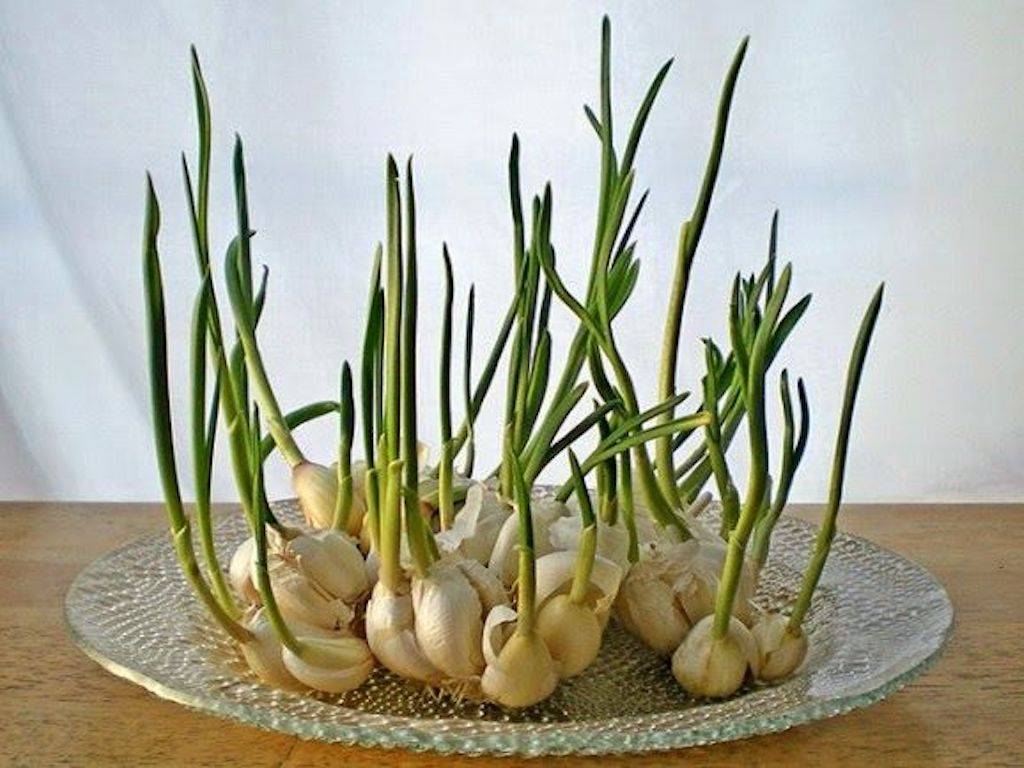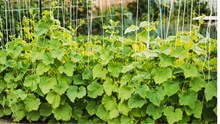
The idea behind regrowing vegetable leftovers in water is straightforward: plants are designed to absorb energy from the sun and nutrients from the soil. Plants may still utilise a tiny glass or dish of water to develop new delicious branches or soil-ready roots, even if it won't give the same nutrients as robust soil.
Plants That Produce Shoots
By submerging the inedible base of certain popular kitchen vegetables in water, you may quickly regenerate the edible stems and leaves. Place these stumps on a sunny windowsill and refresh the water often for optimum results.
Celery and leeks are usually sold with their bases still attached, and occasionally with tiny white roots dripping out. This makes it very easy to regenerate these vegetables: simply place the bases in a tiny glass with about an inch of water at the bottom and wait for new stalks to sprout. When the water level drops, top it up, but don't drown the plant by immersing too much of the base. Even though your new sprouts will be thinner than the originals, a tiny amount of these crunchy vegetables may add flavor to a variety of recipes.
Lettuce And Cabbage
After you've ripped off all the leaves from a head of cabbage or lettuce for your salad, you often discard the tough white lump at the base. You may coax fresh leaves out of this portion by submerging it in water. Place it leaf-side up in a wide mug or shallow dish with an inch or two of water, and check it frequently to ensure the exterior doesn't become sticky. New tiny leaves should grow from the middle of the stump within a week or two. Although your homegrown head will not return to its full green beauty, it can be used as a garnish or to enhance a bigger dish.
Garlic And Green Onions
While garlic and onion bulbs can not regenerate without soil, these aromatic plants can produce tasty green shoots when grown in water. Place a single garlic clove in a small cup of water and hang it with toothpicks so that the bottom is submerged but the top is not. The bottom few inches of a green onion, or scallion, can be used in the same way. You should begin to notice hints of green growth in a few of days. These onions and garlic shoots (called scapes) may be harvested with normal kitchen scissors, and you can keep watering them to grow more.
Plants With The Ability To Establish Roots
The good news is that water and sunlight may also help kitchen wastes to establish roots that will support the larger plant in the soil. After developing these strong, robust roots in water, the veggie may be transplanted into some nice soil.
To grow some delicious taters, you'll need a few toothpicks or some other sort of handmade suspension system, much like with garlic and the herbs above. Potatoes and their counterparts, such as yams, may be coaxed into sprouting both roots and leaves underwater and in the air with the appropriate setup. Place a tiny portion in the water with at least one eye pointing upward. After a few weeks, both ends of the chunk should have grown. Then, with only the leaves above ground, bury these emerging tubers in dirt. The plant will ultimately produce new root masses, which you will be able to dig out and consume the following year.
Herbs
One sprig of cilantro, thyme, basil, or any herb is all it takes to regenerate a whole plant. Set aside a healthy branch with a few leaves growing on it the next time you use your favourite herb in the kitchen—the stem below the lowest leaf should be a few inches long. Then suspend this sprig in a tiny glass of water using a toothpick or bent paperclip. The bottom of the stem should be submerged, but the leaves should remain dry. Underwater, roots should start to grow soon. Transfer the tiny plant to soil when the roots grow more than an inch long; the section that was underwater should now be beneath dirt. Your little herb can grow into a full-sized plant with proper watering, sunshine, and patience.
While the portion of the ginger plant we consume is commonly referred to as a root, it is actually a rhizome. Even a little piece of ginger, like potatoes, may grow both roots and leaves. Your ginger chunk should be slightly submerged in water until the roots emerge and develop to a length of one or two inches. Because ginger is a tropical plant, keep its surroundings warm—at least 68 degrees Fahrenheit, but not below 50 degrees Fahrenheit. Plant the ginger in soil and water it frequently until it has roots and at least one green sprout emerging out of the light-coloured nodules on the rhizome. The new plant will begin to grow bulk underground after four to six weeks, allowing you to simply dig it out, chop off a portion for your recipe, and rebury it.
















